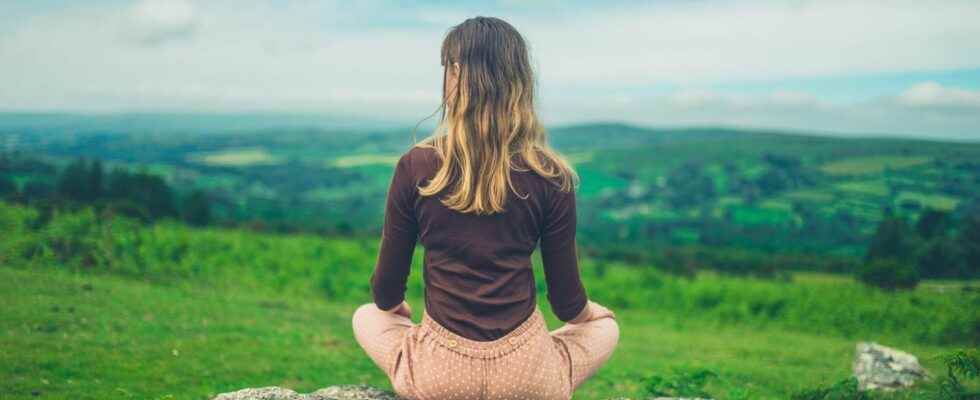Most of us tend to prefer doing something to nothing. We would often do well to wait and see instead of resorting to activism. A plea for the so-called stone strategy.
Penalty just before the final whistle. The goalkeeper nervously tripped up and down. The striker barely touches the ball with her foot before the goalkeeper leaps to the left. The ball lands in the other corner of the goal – and goes in. Of course, the goalkeeper could not know where the player would shoot. In fact, she would have the best chance of keeping the ball if she stayed in the middle of the goal and only acted briefly. That would look like laziness, though, and she’d be resented for letting the ball in that way. If she jumps into a corner, at least she tried. So it’s better to do something – even if it reduces the chances of success – than to wait and see. A beautiful symbol of our society.
The main thing is to act: We fall victim to the action bias
Our society celebrates doers, those who dare, who take action. Being productive, doing things, enjoys a good reputation in today’s meritocracy. On the other hand, hesitation, waiting, taking a look for the first time or doing nothing is not so highly regarded. But why is that so difficult for us? Very simple: We humans feel better when we have done something – this is especially true in crisis situations. Even if the consequences of our actions are unpredictable and ultimately even negative, we would rather do something than nothing. Science calls this tendency action bias.
In many situations it would be wiser to get an overview first and think about it in peace, instead of acting hasty. See penalty. Author Holm Friebe explains this concept in his non-fiction book The Stone Strategy: The Art of Doing Nothing. He advocates declaring a (very passive) fight against the prevailing activism. Because that would make life easier for us in many areas, both small and large.
Stein’s strategy: just don’t get actionistic
A simple example: I don’t have to answer every message immediately if it doesn’t contain an explicit question. Not countering every passive-aggressive SMS or WhatsApp can often defuse conflicts and prevent misunderstandings. By the time we speak to the person the next time, the issue has often resolved itself or the anger has at least subsided a little. This is not about avoiding conflict. But firstly, not every unimportant little thing has to be discussed, and secondly, factual discussions that do not arise out of emotion are much more promising.
The stone strategy can also be used in other areas. Very few financial experts consider it a good strategy to frantically gamble away your shares on the stock exchange with the smallest price fluctuations. And entrepreneurs are often better off not picking up on every trend immediately, but rather letting other people try things out first and thus being able to learn from their mistakes. This often makes products better than rushing to try it yourself – simply out of fear of missing opportunities.
In fact, doing nothing can increase your chances of survival
Incidentally, this also applies to certain emergencies: around three quarters of all missing people die within the first 48 hours. And not necessarily because it would be impossible to survive longer in the forest or on a desert island, but because they are exhausting themselves trying to extricate themselves from the situation. If they just waited for the search squad to find them, their chances of survival would be much better.
So there are many situations in which we should rather wait until we can really assess the situation – and only then should we act. There is also a fancy name for this principle, but this time it comes from the military field. The so-called OODA loop is about how we should make decisions in difficult situations. The four letters stand for observe – orient – decide – act. In other words: observe – orientate – decide – act. Many people tend to skip the two Os, observe and orient, and make a direct decision to react. However, this decision is usually uninformed, and we would do better to get an overview of the situation first.
Our brain needs nothing to function
In general, we should do nothing much more often. And not just not reacting, not answering or waiting a bit, but simply doing absolutely nothing. Because our brain needs breaks to be creative. It is not for nothing that the best ideas come to us in the shower or on vacation. And this pattern can also be applied to everyday life. It’s usually not efficient to actively work on things for the full eight hours of a workday. We need breaks to think freely. This is often even more productive than just working through things. Because if our brain has the space for it, it might find a much simpler solution to the task at hand.
However, this is anything but easy – after all, we are used to being constantly doing something in our society. We either react to something, work something out or look for a new project. the main thing is to act. But we can learn to do nothing, and we should urgently do so. So instead of doing things all the time just to keep from standing still, let’s practice pausing, not doing. First take a deep breath and think about whether (re-)acting really helps us. If not, we’d better not get the ball rolling.
Sources used: “The Stein Strategy: The Art of Doing Nothing” by Holm Friebe, madamemoneypenny.de, spiegel.de, deutschlandfunkkultur.de
